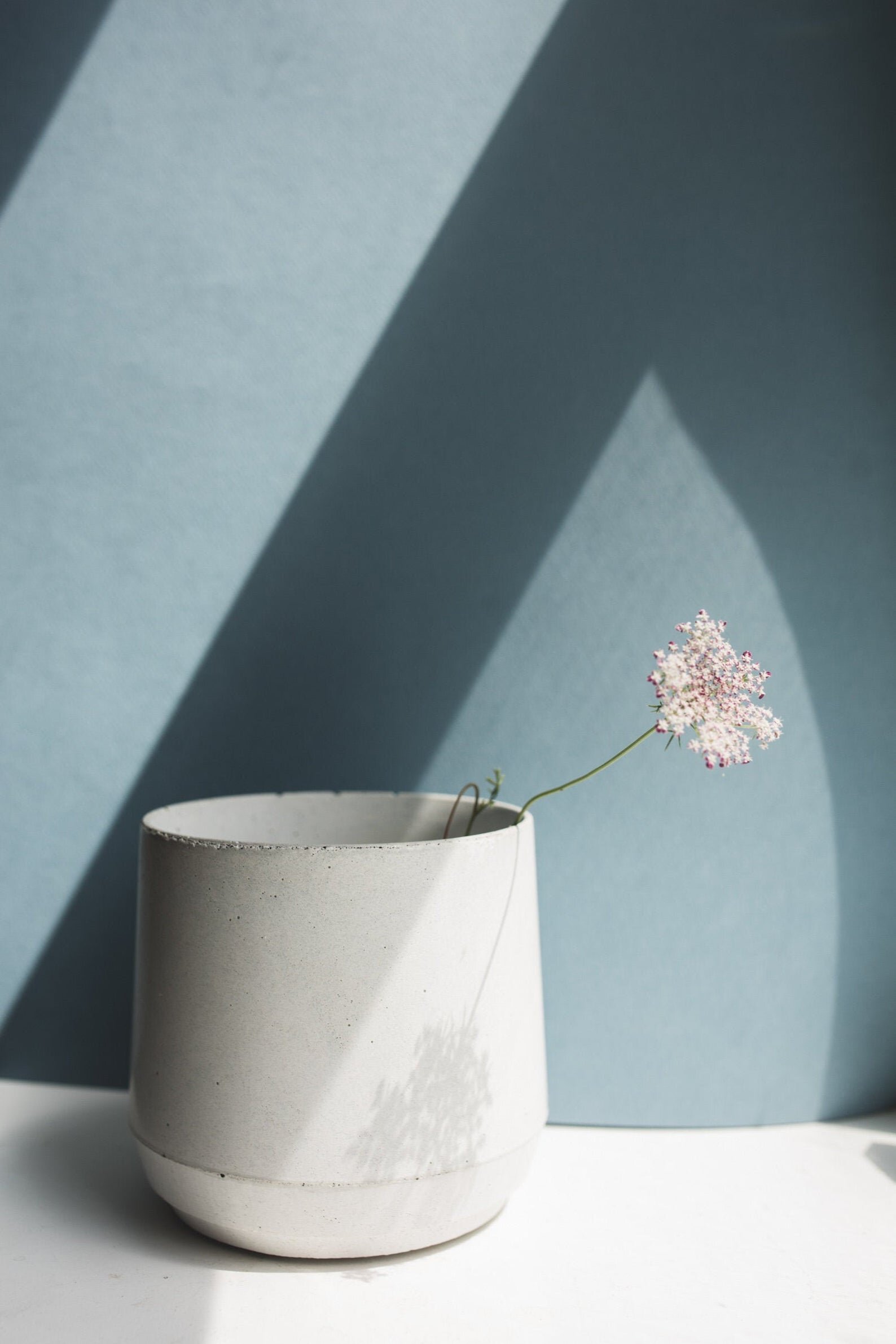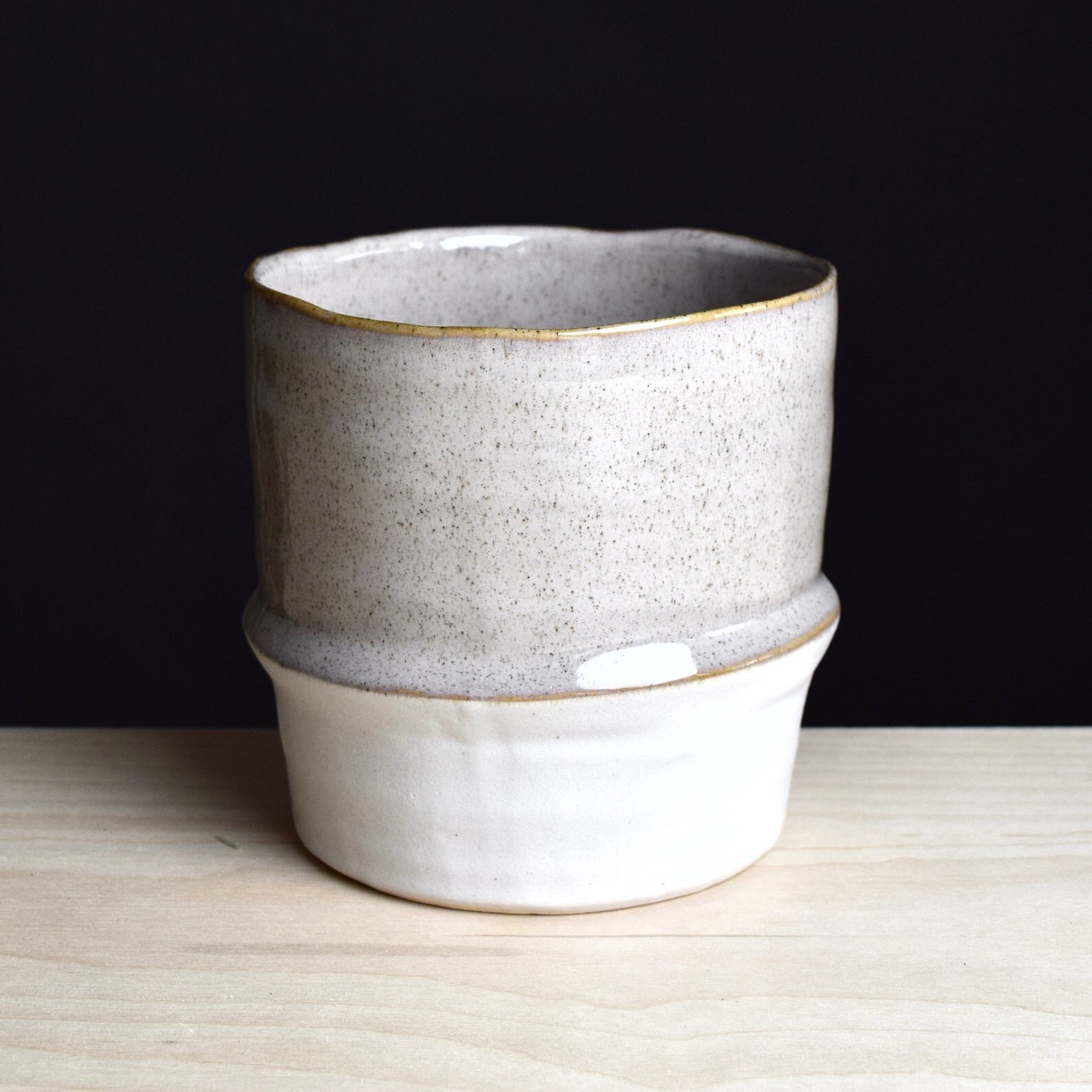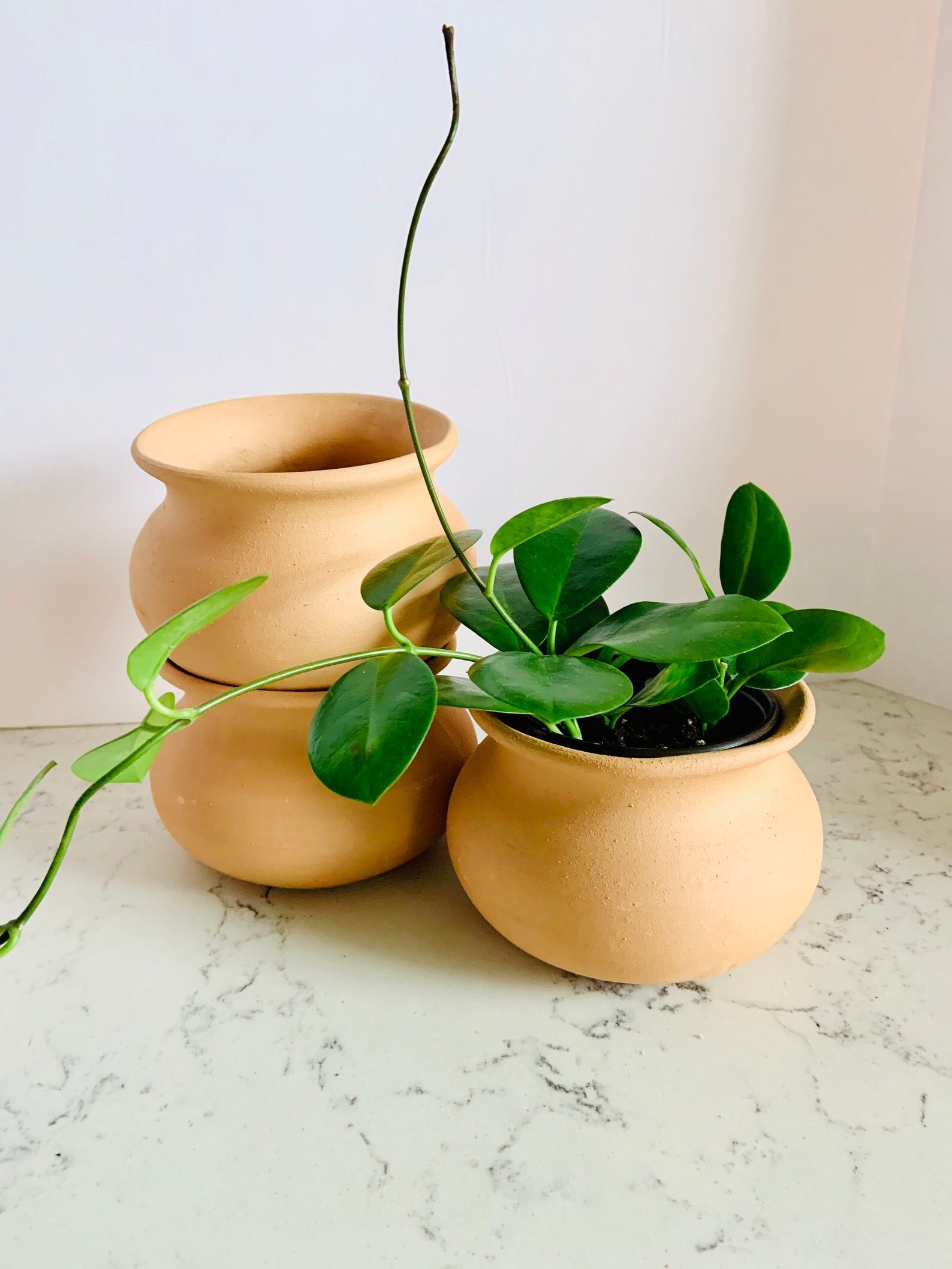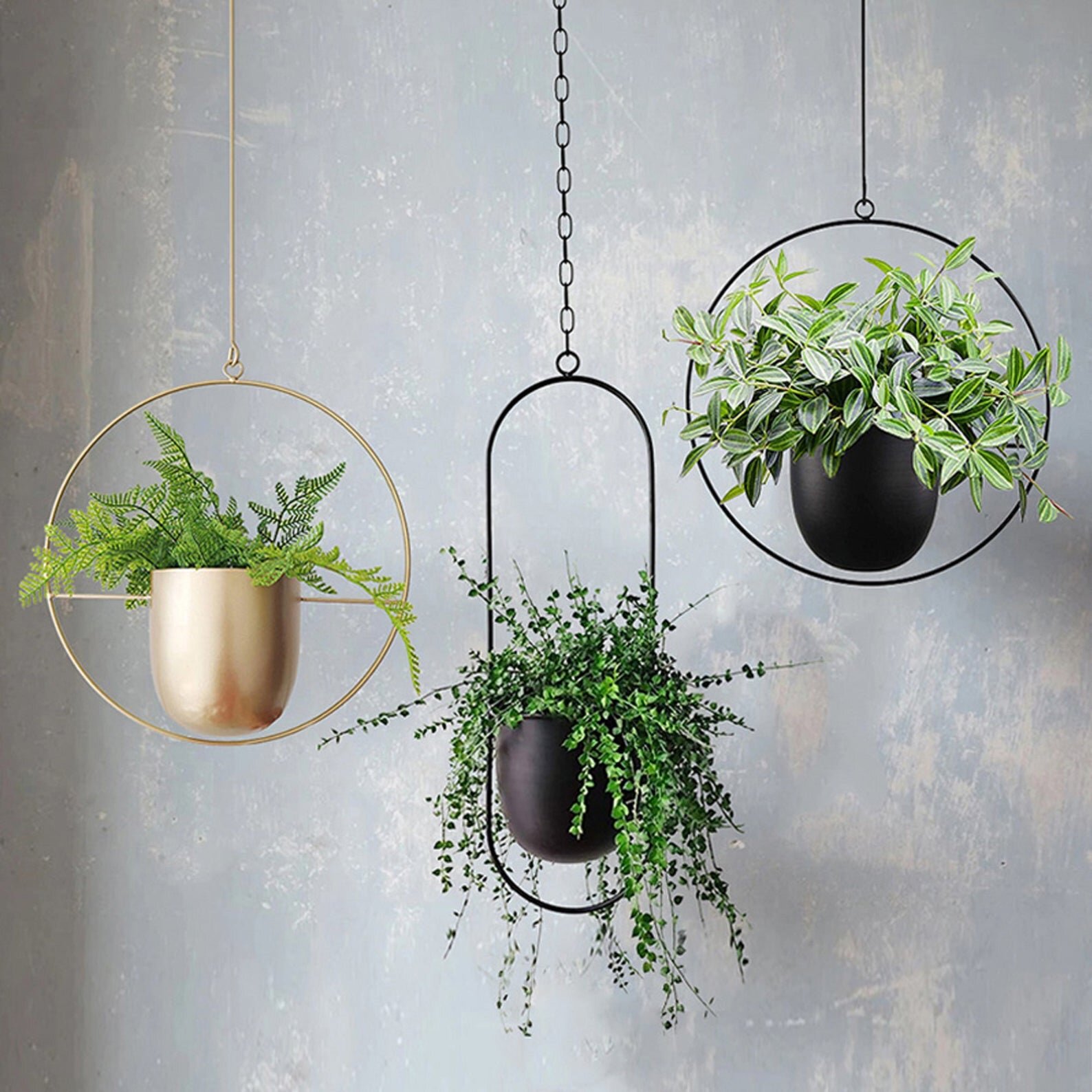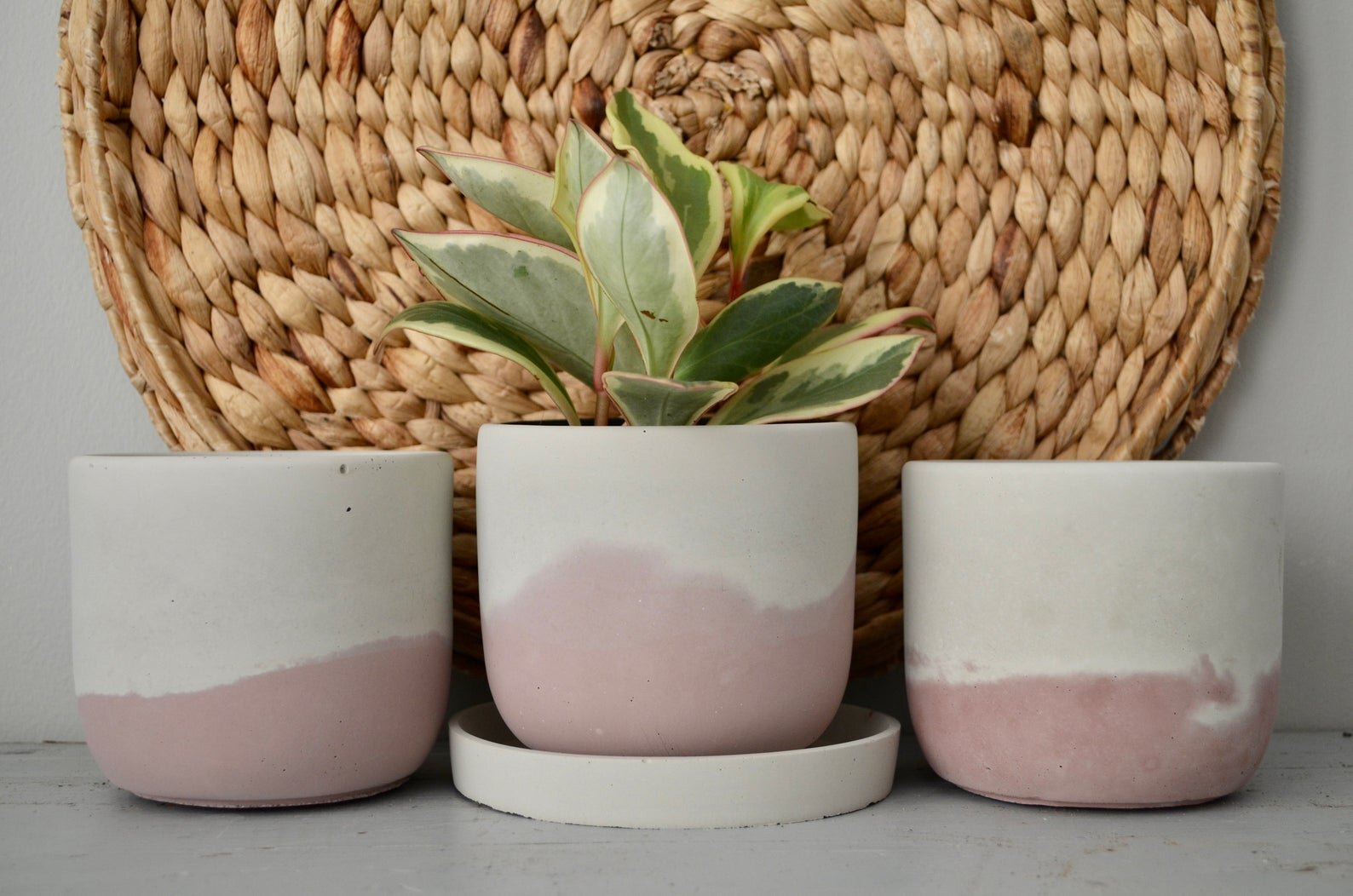10 Types of Plant Containers and How to Use Them
Paint your Terracotta Pot in this fun DIY
I love using a wide range of items to create pots for my plants. I wander around flea markets and vintage stores looking for old tins while my mom likes to use rusty iron bowls. Really anything can be made into a pot. Even if it isn’t waterproof or doesn’t have good drainage, you can make it work! Here are some pros and cons to different types.
Terracotta
Terracotta is probably one you see the most of. It is extremely cheap, can be found in a variety of sizes everywhere, and is a rich lovely color. Terracotta is fragile and is generally unglazed. This means the surface “breathes” which allows the soil on the inside to dry out faster than you would expect and keeps the roots healthy. This is great for cacti and succulents but not great for plants who love water. You can glaze the inside to avoid this. I did a DIY on how to paint terracotta pots to give them a more diverse, fun look.
Self-Watering
While self-watering planters are not necessarily a specific material they are still very useful and I wanted to include them on this list. Self-watering planters come with a reservoir built-in which means if you are prone to forget about watering your friends or are going on vacation, this may be the type for you. There are some limitations though. One, they are not as common so you be hard pressed to find exactly what you are looking for. Secondly, I am not a fan of plastic pots in my house and this type is most commonly plastic.
Stone
Stone is a quite beautiful option that is as expensive as it is pretty. Despite being expensive, it will last you a very long time. Stone planters are excellent choices for outside as they can slowly grow a moss coating. Additionally, stone is frost-proof which means in colder regions, it will insulate the roots, providing a cozy home.
Hanging Metal Planter with an Asparagus Fern
Metal
Metal planters are very durable but as this is a pretty broad range when you think of how many things are metal. Iron, the first, is very heavy and can rust, but that can give you the look you are looking for. My favorite metal container is tin. I have a collection of tins, most from vintage stores, spread across my apartment with an assortment of plants in them. However, they are not waterproof and will rust inside. Unlike iron which is extremely thick and durable, tins will rust through the bottom or sides and this will defeat the entire purpose. Because of this I use water trays on the inside and use the basic pots the plants come in to set inside. Sometimes my tins are weird sizes though so I use an extra thick ziploc to line the inside with pebbles at the bottom. Aluminum is another great option as it very light, does not rust, and is relatively cheap.
Ceramic
Ceramic is what I have the most of. I like supporting local artists and am lucky to be able to find so many unique shapes and glazes in Seattle. Plus, many of them have built in trays. However, ceramic can be expensive. Ceramic is kilned at a high temperature which makes the pot less porous and generally durable unless left out in cold temperatures which can lead to cracking. Another note is that they can be heavy, though this is useful for top heavy plants.
Fiberglass
Fiberglass planters are a common alternative to plastic. They are made to imitate other materials while being generally cheaper and lighter than said materials they imitate. They can handle any weather and won’t corrode which makes them ideal for outside. To ensure they keep their vibrant color a fiberglass wax can be used.
Make your own Concrete Planter with this fun DIY
Concrete
I like to include concrete because you can make concrete planters very easily with basic supplies from any home improvement store. This gives you so many possibilities! Some things to keep in mind before you whip a batch of quick set: It is heavy! Concrete is a great planter for larger specimens because it will keep them from tipping over but it also means you will struggle to move it. I only make small concrete planters too avoid this issue. Concrete is also a great insulator so it can sit in the scorching sun or be left outside for the winter, which is handy since you probably won’t want to move it around.
Wood
One of the most natural looking choices is wood; however, it can rot. You can combat this in a couple ways. Cedar and redwood are rot-resistant but you need to make sure that the planters are made well as wood contracts and expands with temperature and humidity. Another way to protect from rot is to line the inside with plastic but if you do this, make sure there is a hole for drainage. If you don’t want to use plastic, I myself try not to add to the plastic in the world, but have a softer wood, paint or stain the inside. Another great thing about wood is that you can easily build your own planter! I think I need to make a tutorial soon!
Hypertufa
Hypertufa, concrete’s lighter and more textured cousin, is also easily made. Hypertufa is a combination of perlite, peat moss and concrete. This gives it a stone look but at an astonishingly light weight. It is a very porous surface so is great for succulents as it will provide great drainage. You can line the surface with coconut fibre as many do in hanging planters to slow down the drainage if you do not want that.
Some pothos propagating in an apothecary jar
Glass Vases
A popular new trend is growing plants in glass vases. While I am blessed that my cats do not treat my plant’s soil as litter boxes, growing plants in vases is a precarious endeavor for me. Floyd and Huckleberry are prone to knocking things over when they get the zoomies. That being said, seeing the roots or bulbs grow and spread is really pleasing. Plants need three things to survive: water, oxygen and nutrients. Oxygen and nutrients are given to the plant from soil so to fix this you can use water beads or pebbles to deliver oxygen. Rainwater or well water is best as tap water is stripped of nutrients. My favorite way to display plants in glass is to propagate some of my pothos and brasil philodendron in apothecary vases.














